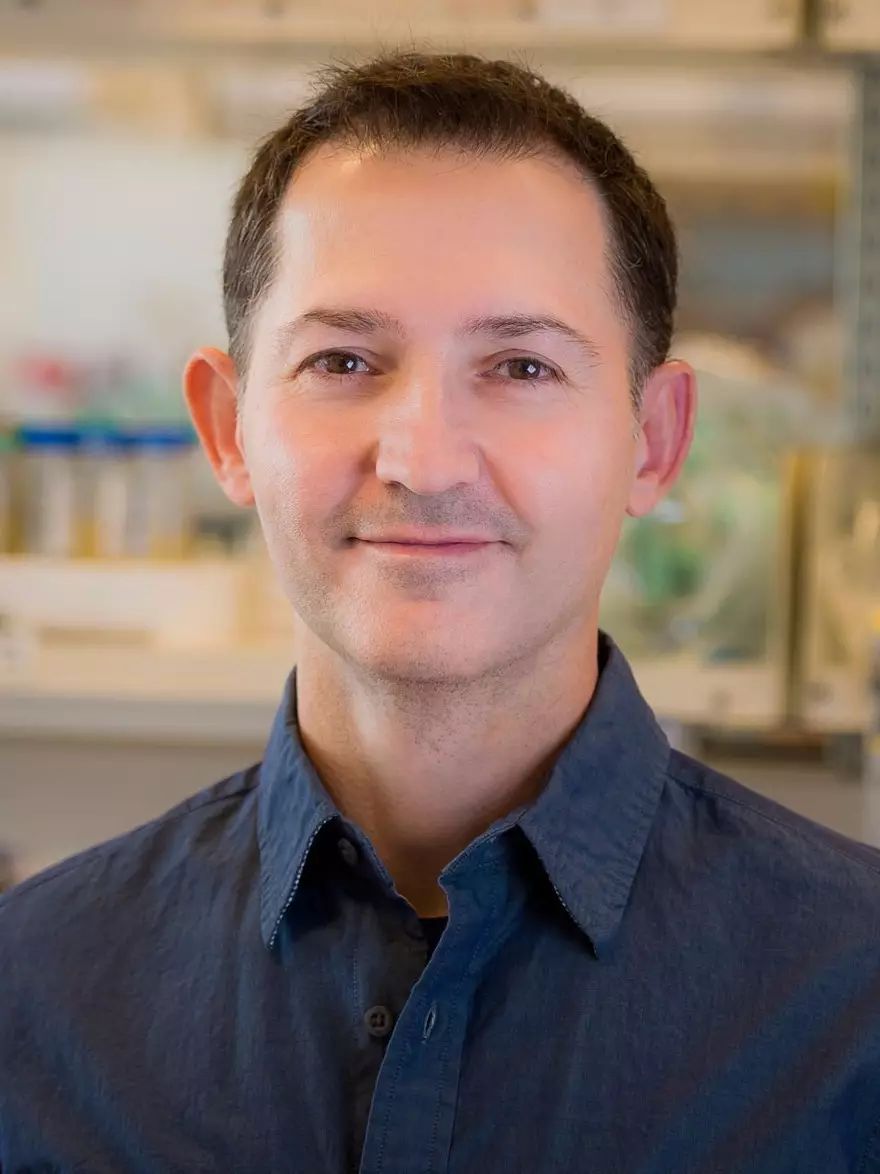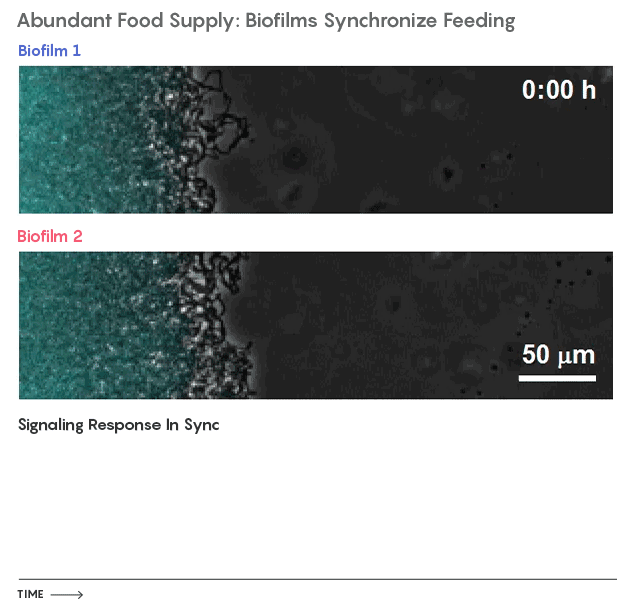正文

Gurol Süel, professor of molecular biology at the University of California, San Diego, studies how bacteria use electrical signals, analogous to the action potentials in nerve cells, to organize themselves within biofilms.
Courtesy of UCSD
Quorum sensing was the obvious suspect. But Süel, who was trained in physics, suspected that something more than the diffusion of chemical messengers was at work in his Bacillus colonies. He focused on ion channels — specialized molecules that nestle into cells’ outer membranes and ferry electrically charged particles in and out. Ion channels are probably most famous for their role in nerve cells, or neurons. Most of the time, neurons pump out sodium ions, which carry a single positive charge, and let in a different number of potassium ions, also with single positive charges. The resulting charge imbalance acts like water piling up behind a dam. When an electrical impulse jolts a neuron’s membrane, specialized channels open to allow the concentrated ions to flood in and out, essentially opening the dam’s floodgates. This exchange propagates along the neuron, creating the electrical “action potentials” that carry information in the brain.
Süel knew that bacteria also pump ions across their membranes, and several recent papers had reported spikes of electrical activity in bacteria that at least loosely resembled those found in the brain. Could bacteria also be using the action-potential mechanism to transmit electrical signals? he wondered.
He and his colleagues treated biofilms in their lab with fluorescent markers that are activated by potassium and sodium ions, and the potassium marker lit up as ions flowed out of starved cells. When the ions reached nearby cells, those cells also released potassium, refreshing the signal. The signal flowed outward in this way until it reached the biofilm’s edge. And in response to the signal, edge cells stopped dividing until the interior cells could get a meal, after which they stopped releasing potassium.
Süel’s team then created mutant bacteria without potassium channels, and they found that the cells did not grow in the same stop-start manner. (The researchers also saw no movement of labeled sodium ions in their experiments.) Like neurons, bacteria apparently use potassium ions to propagate electrical signals, Süel and his colleagues reported in Nature in 2015.


Time-lapse video of two Bacillus subtilis biofilms in a shared environment shows their synchronized growth, which the bacteria coordinate through electrical communication. Green fluorescence reveals waves of released potassium ions that sweep through the biofilms as growth signals. In Süel’s experiment, when a nutrient is plentiful (left), the two biofilms grow at the same time. Their growth signals rise and fall in sync. When the nutrient is in short supply, the two biofilms “time-share” it for more efficient consumption by growing out of phase: each grows while the other is resting.















